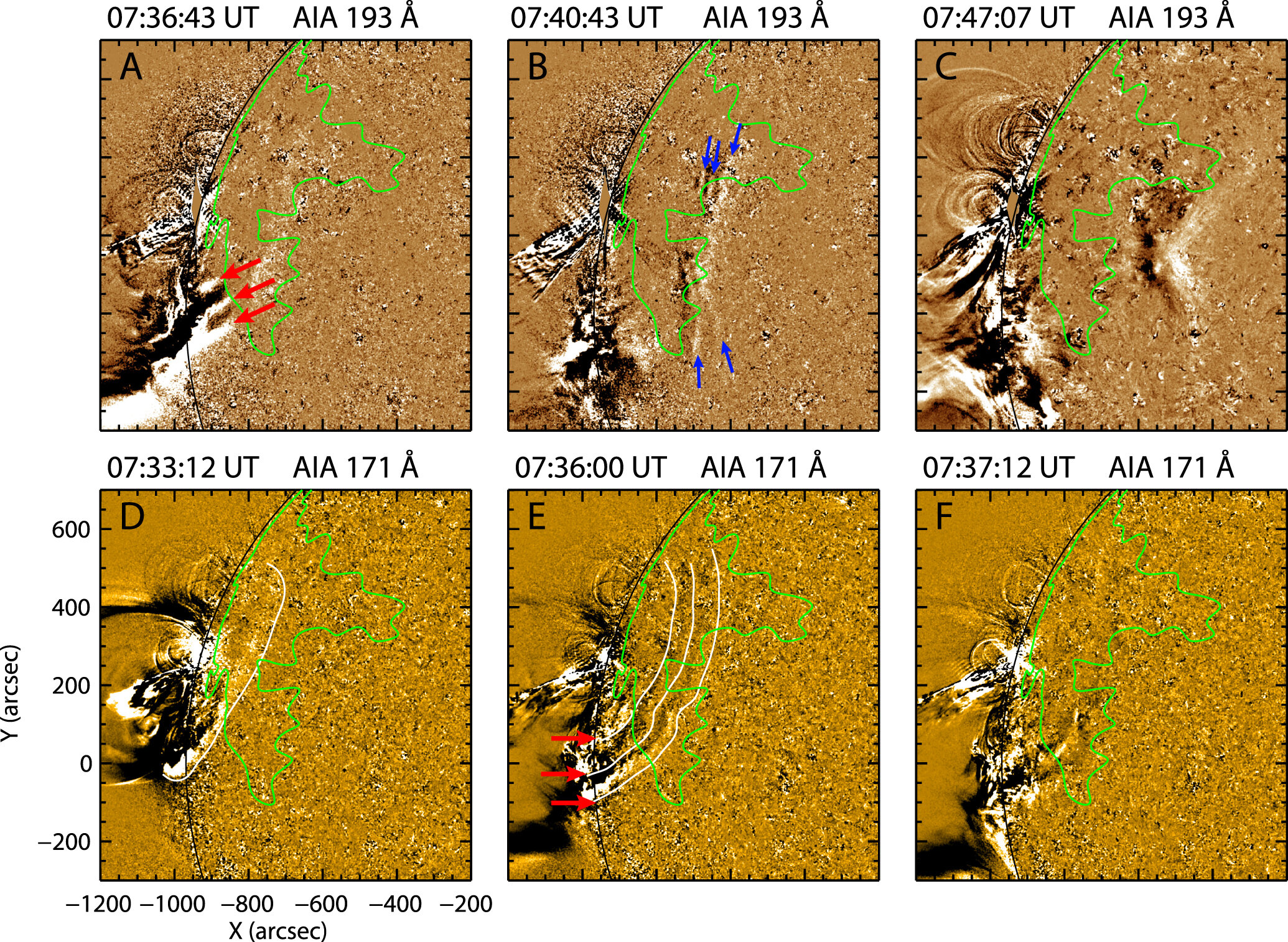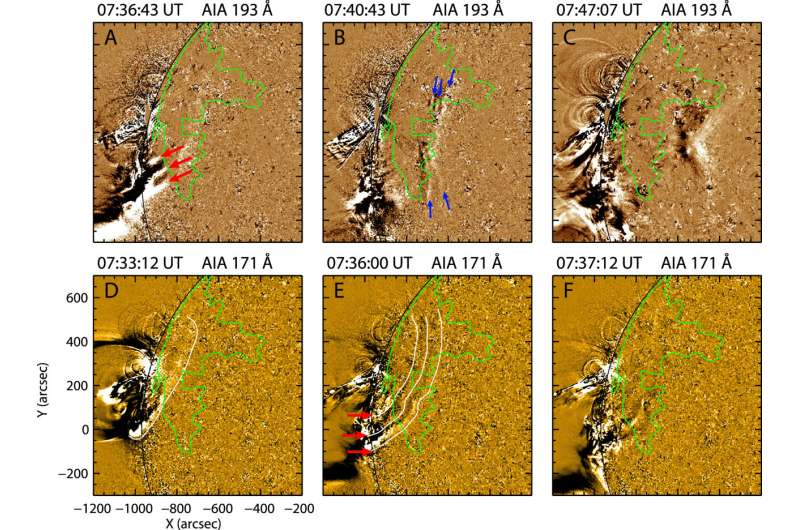

Researchers led by Dr. Zhou Xinping from Yunnan Observatories of the Chinese Academy of Sciences and their collaborators have found solid evidence of coronal waves excited by flares.
Their study was published in The Astrophysical Journal Letters. The study result implies that the broad extreme-ultraviolet (EUV) wave train, including multiple wave fronts, should be driven by some nonlinear energy release processes in the accompanying flare.
It is generally believed that the single, diffused, and bright disturbance is a fast-mode piston shock and bow shock driven by a coronal mass ejection (CME)’s expansion.
Although this scenario can explain many observational features of the large-scale coronal waves, it is hard to distinguish whether a particular EUV wave is driven by a CME or ignited by a flare because the CME acceleration phase generally synchronizes with the flare’s impulsive phase.
Using the high spatio-temporal imaging observations from Solar Dynamics Observatory/Atmospheric Imaging Assembly (SDO/AIA), Zhou Xinping and his collaborators found that a broad EUV wave train composed multiple large-scale wave fronts. This wave train is difficult to explain using the CME lateral expansion theory.
They found that the physical parameters of the wave train, such as speed, amplitude, and energy flux were consistent with the classical large-scale EUV wave.
Meanwhile, the analysis result showed that the CME acceleration phase’s beginning time was behind the first wave front’s appearance. In contrast, the beginning time of the wave train was slightly behind the onset of the accompanying flare. Combined with the above observational fact and the common period between the accompanying flare and wave train, the researchers proposed that the flare rather than the CME triggered the wave train.
This study may provide a reliable case for supporting the flare-driven mechanism of the EUV waves. It also provides the first evidence of the interference effect of EUV waves, suggesting the true wave nature of the observed disturbance.
Researchers observe total reflection of ultraviolet wave train at a coronal hole
Xinping Zhou et al, Observations of a Flare-ignited Broad Quasiperiodic Fast-propagating Wave Train, The Astrophysical Journal Letters (2022). DOI: 10.3847/2041-8213/ac651e
Chinese Academy of Sciences
Citation:
Researchers find solid evidence of coronal waves excited by flares (2022, May 9)
retrieved 9 May 2022
from https://phys.org/news/2022-05-solid-evidence-coronal-flares.html
This document is subject to copyright. Apart from any fair dealing for the purpose of private study or research, no
part may be reproduced without the written permission. The content is provided for information purposes only.

